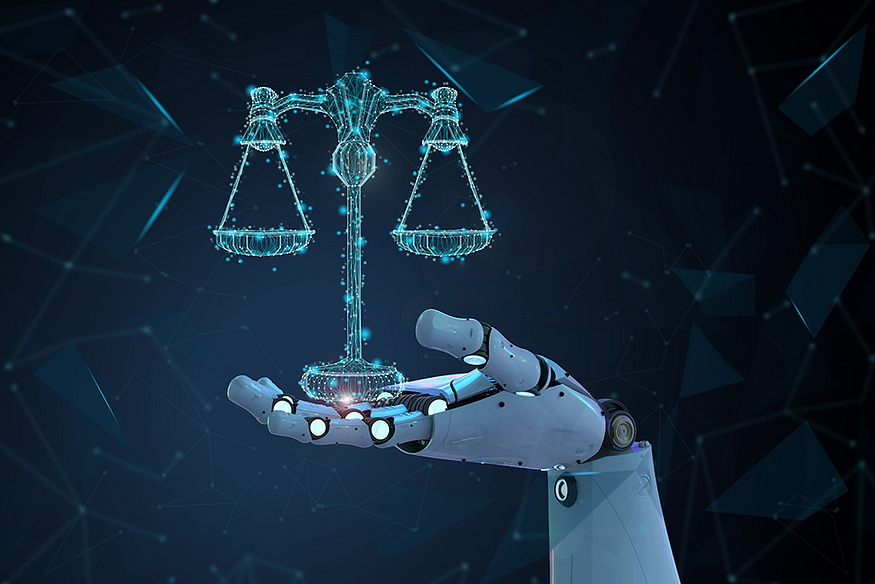Navigating the Path: Exploring the Pros and Cons of Regulating AI

Artificial Intelligence (AI) has evolved at an unprecedented pace, permeating various aspects of our lives. From autonomous vehicles to virtual assistants and complex algorithms, AI has become deeply intertwined with our daily routines. However, as this powerful technology continues to advance, questions regarding the need for regulation have emerged. In this article, we will delve into the multifaceted topic of regulating AI, examining both the benefits and challenges that accompany such measures.
The Potential Benefits of Regulating AI
- Ethical Framework: One of the primary motivations behind regulating AI is to establish an ethical framework that guides its development and deployment. AI systems possess the ability to make autonomous decisions that have a profound impact on individuals and society as a whole. By implementing regulations, we can ensure that AI is developed and utilized in a manner that aligns with our shared values and ethical principles.
- Safety and Security: AI-powered systems can wield immense power, and if left unchecked, they could potentially pose risks to safety and security. Regulating AI can promote the implementation of safeguards and standards that mitigate potential threats. This includes addressing issues such as bias in AI algorithms, ensuring data privacy, and preventing the malicious use of AI technologies.
- Transparency and Accountability: AI algorithms can sometimes operate as “black boxes,” making it challenging to comprehend the decision-making processes behind their outputs. By regulating AI, we can encourage transparency and accountability, making it easier to understand how these systems arrive at their conclusions. This fosters trust among users and allows for the identification and rectification of potential biases or errors.
The Challenges of Regulating AI
- Innovation and Progress: Overregulation can stifle innovation by burdening AI developers with excessive constraints. Striking the right balance between regulation and fostering innovation is crucial. It is important to avoid impeding the advancement of AI technology, as it holds tremendous potential for addressing complex societal challenges and driving economic growth.
- Global Consensus: AI operates on a global scale, and establishing consistent regulations across different countries can be challenging. Varying legal frameworks and cultural differences make it difficult to create unified rules governing AI technology. International collaboration and cooperation will be necessary to address these challenges effectively.
- Adaptability and Agility: Technology evolves rapidly, often outpacing the ability to create comprehensive regulations. Prescriptive and rigid regulations may struggle to keep up with the dynamic nature of AI, potentially rendering them obsolete or inadequate. Crafting regulatory frameworks that can adapt to evolving technologies while remaining effective is a complex task.
Balancing Act: A Collaborative Approach
Regulating AI requires a balanced approach that considers the potential benefits and challenges involved. Rather than viewing regulation as a restrictive force, it should be seen as an enabler, fostering responsible and beneficial use of AI technology.
To achieve this, collaboration between various stakeholders is crucial. Governments, industry leaders, AI developers, researchers, and ethicists need to engage in thoughtful dialogue to craft regulations that strike the right balance. This collaborative approach ensures that regulations are informed by technical expertise, societal values, and the concerns of all relevant parties.
Moreover, a continuous feedback loop is necessary to refine regulations as the technology progresses. Regular evaluations, audits, and adaptive frameworks can help ensure that regulations remain effective and up to date.
Regulating AI presents both opportunities and challenges. Establishing a framework that encourages innovation, while safeguarding ethics, safety, and transparency, is key. By engaging in a collaborative approach and embracing continuous learning and adaptation, we can harness the potential of AI while ensuring that it aligns with our shared values. With responsible regulation, we can navigate the path of AI development and deployment, shaping a future where AI serves as a force for positive change.\
What do you think?
What are your thoughts on Regulating AI?
Lyron Foster is a Hawai’i based African American Author, Musician, Actor, Blogger, Philanthropist and Multinational Serial Tech Entrepreneur.

